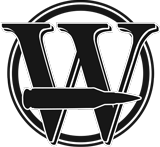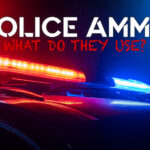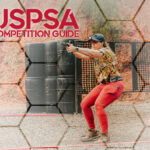
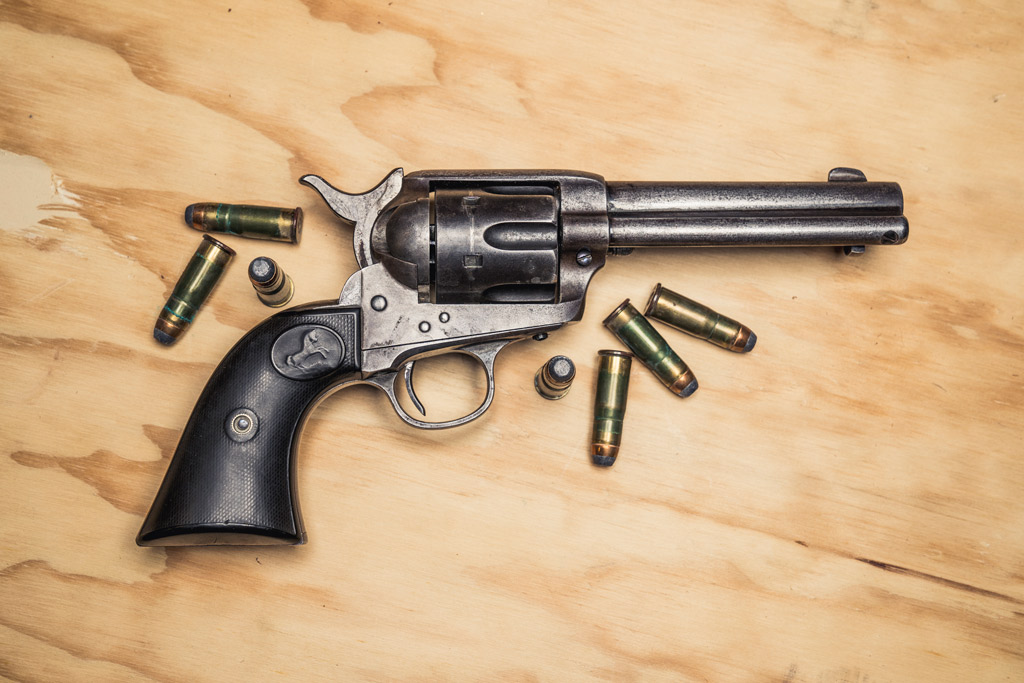
Guest Writer: Kenzie Fitzpatrick
Cowboy Action Shooting Stages
Cowboy Action stages are fun to shoot because you rarely ever see the same stage twice. The biggest learning curve is understanding what each of the sweep patterns is and how to best shoot them. Sweep patterns are the shooting sequence you are given for a set of targets. The stages are given out via email, social media, or published on the club’s website that is hosting the match, be sure to always look them over before attending. If you want to become good at shooting sweep patterns, be sure to head to the range and practice, practice, practice.
You’ll find that some stages are written for shooting specific guns in a certain order, but when given the option, it’s good advice to always shoot your shotgun last, it takes longer to reload than your other weapons. Another time-eater is transitioning from one gun to the next. Learning how to holster a pistol while grabbing your shotgun with the other hand, then grabbing your ammo with your non-dominant hand and loading it properly takes a lot of practice. This article will guide you through some of the lessons I’ve learned and will help you to analytically think through shooting a stage.
Reloading Your Shotgun For Competition
You can win or lose a competition with your shotgun, and that’s not just in cowboy action shooting. Loading a shotgun is a lost art. My specialty is loading a side-by-side shotgun.
The first place to start is getting a double loop shotgun belt so your rounds are already next to each other. When you grab your shotgun ammo, always use your non-dominant hand, which for me is my left. Put your pointer finger on top of both rounds so they are even with each other. Wrap your middle and ring finger on the outside of the rounds and your thumb on the inside of the rounds, keeping them straight and the rounds together. Leave your pinky out if possible. Keep your rounds in this position when you pull them out.
Your shotgun should already be on your shoulder, with the action open, with your dominant hand holding it ready to shoot with your finger off the trigger. Your eyes should be looking at your open action, on the left barrel side. When you bring your ammo up, keep the rounds vertical, perpendicular to the shotgun. Focus on placing your left round under the lip of the left barrel and the right round should align as well. Using your pointer finger, push down on the rounds to load them into the shotgun. Close the barrel with your non-dominant hand and shoot away.
Shotgun Reloading Reminders:
- Grab your shells with your non-dominant hand
- Put your pointer finger on top of both rounds, keep them even
- Middle and ring finger on the outside of the rounds, your thumb on the inside of the rounds
- Keep the rounds vertical, perpendicular to the shotgun
- Push down on the rounds to load them into the shotgun

Loading a shotgun in a CAS match is as easy as 1-2-3 with the right belt.
Reloading Your Rifle For Competition
The need to reload your rifle can happen for several reasons. Some stages call for a reload, so it’s necessary to carry spare ammo on you. I use a leather slide with 5 bullet loops that goes on my shooting belt right behind my right pistol holster.
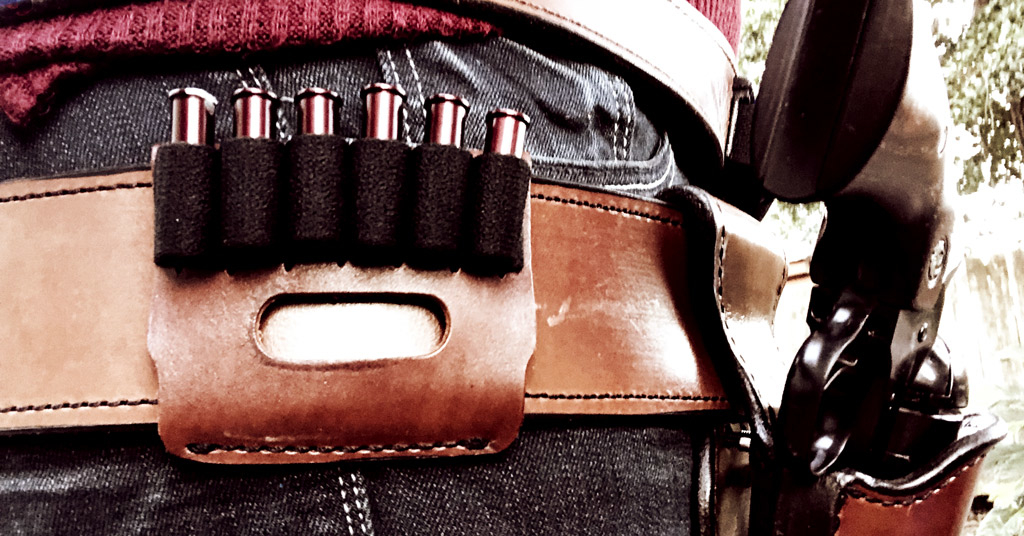
A leather slide with 5 bullet loops for holding rifle ammo at a Cowboy Action Shoot.
There are two ways to reload a lever action rifle, over the top of the gun or through the loading port. To load over the top of the rifle, once you shoot your last round, you lever the action open, grab your round with your shooting hand (right hand for me), keep your pointer finger on top of the round, put the round into the top of the rifle and push the round down with your pointer finger, close the lever (without putting your fingers back into the lever, and fire the reloaded round.
The slower, but easier way is to fire your last round, leave the lever closed, load a round into the loading port, lever the gun, and then shoot. You can either grab the round with your shooting hand and load it or use your non-shooting hand to do so. Whichever side you decide to load from is the side you want to keep your spare rounds on.
Rifle Top-Reloading Reminders:
- After your last round, lever the action to the open position
- Grab your round with your shooting hand
- Using your pointer finger, put the round into the top of the rifle and push the round down
- Close the lever and fire
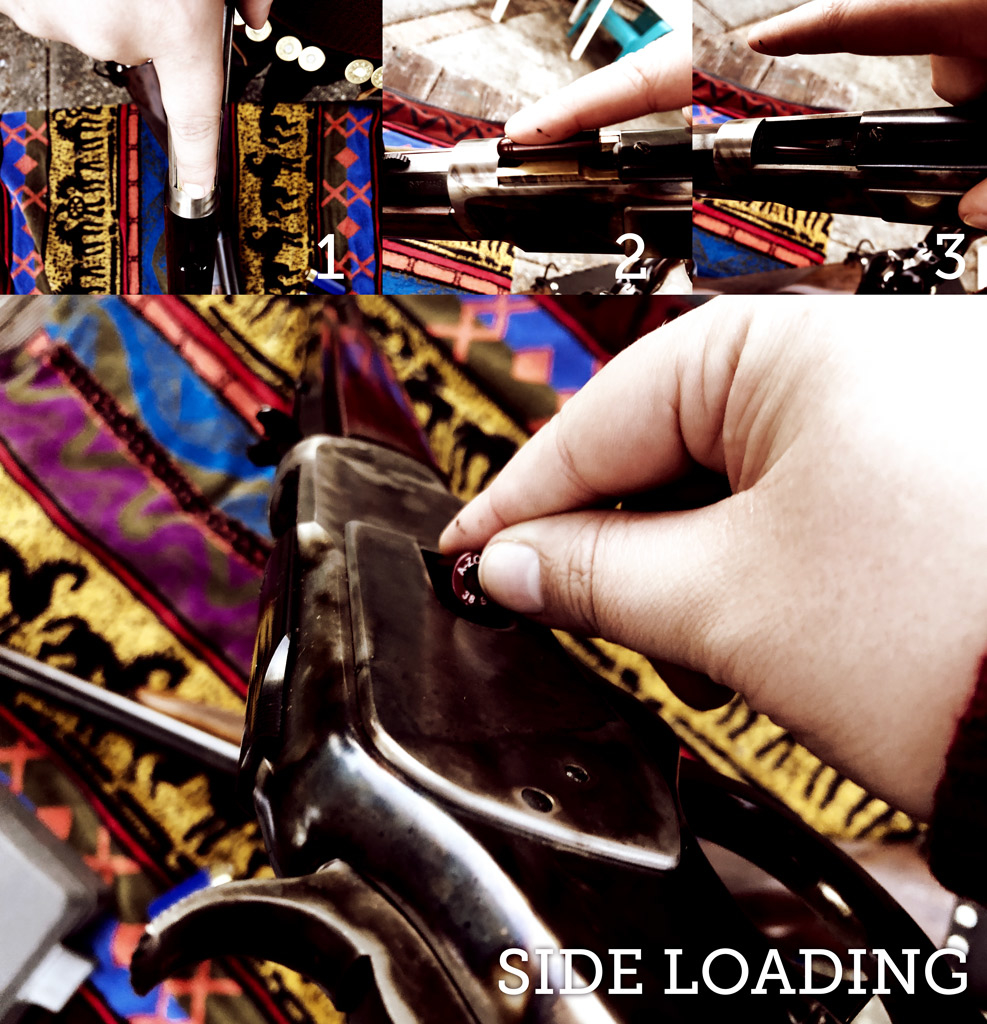
(Top) Over the top loading of a rifle. (Bottom) Sideloading a rifle.
Drawing and Holstering Your Pistols
In cowboy action shooting, you have two single-action revolvers holstered with 5 rounds in each. There are divisions in cowboy action shooting that have you shooting one-handed or with a pistol in each hand, but I will talk about how to draw your pistols and shoot with your dominant hand, while your non-dominant hand cocks the hammer.
It’s very easy to draw your pistol with your dominant hand, but there’s a technique to drawing with your non-dominant hand. Using your non-dominant hand, place your thumb on the front of your holster where the top of your pistol is. Put your pointer finger on the outside of the trigger guard where it’s holstered. Then slide your thumb onto the top of your pistol and pull the gun up out of the holster. Let the other fingers naturally help support the pointer finger and weight of the pistol.
Transfer the firearm to your dominant hand so that all you have to do is grab the pistol grip as you normally would and start shooting. You should only be holstering your pistols with one hand. Be sure to give yourself the extra second to look down and make sure your pistol is actually going into your holster.
Pistol Drawing Reminders:
- Place your thumb on the front of your holster where the top of your pistol is
- Put your pointer finger on the outside of the trigger guard where it’s holstered
- Slide your thumb onto the top of your pistol and pull the gun up and out of the holster
Pistol Holstering Reminders:
- Grab the pistol grip as you normally would
- Holster your pistol with one hand
- Look down and make sure your pistol is actually going into your holster
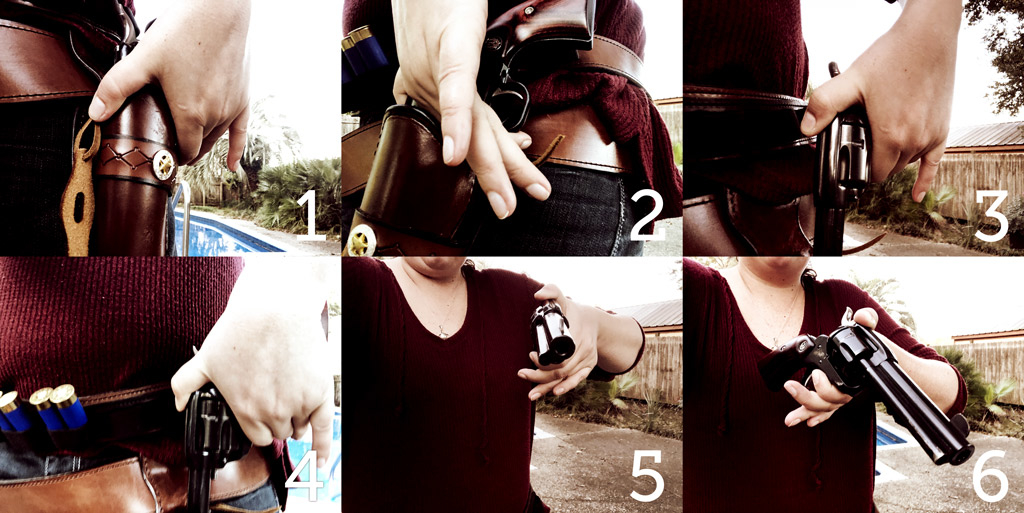
Practice drawing and holstering your pistol until you can do it smoothly using muscle memory.
Transitioning Between Guns & Staging Them Properly
Knowing the order of your firearms and how you are going to shoot the stage is important so you can plan how you will transition between your guns. This is also important because it determines how you “stage” your guns, meaning how you lay them out on the staging table.
Below is stage instructions showing the order is pistol, rifle, shotgun. My dominant hand is my right hand, so I would shoot my right pistol first because as I holster my left pistol last, that frees up my right hand to grab my rifle. This means that I will have my rifle to the left of my shotgun since I’m shooting it first. I do not want to grab the wrong gun, or grab my rifle and have to hoist it over my shotgun, and I don’t want to bump into my shotgun trying to reach my rifle.
Once I grab and shoot my last rifle round, I leave the rifle in my left hand. As I lower the rifle with my left hand, I am intentional on setting it down to the left of my body so I don’t bump into the stock while shooting my shotgun. As I’m laying it down, I’m picking up the shotgun with my right hand. Then all I have to do is grab my ammo, load it and finish shooting. Transitioning is all about multitasking and thinking through how you’re going to shoot a stage.
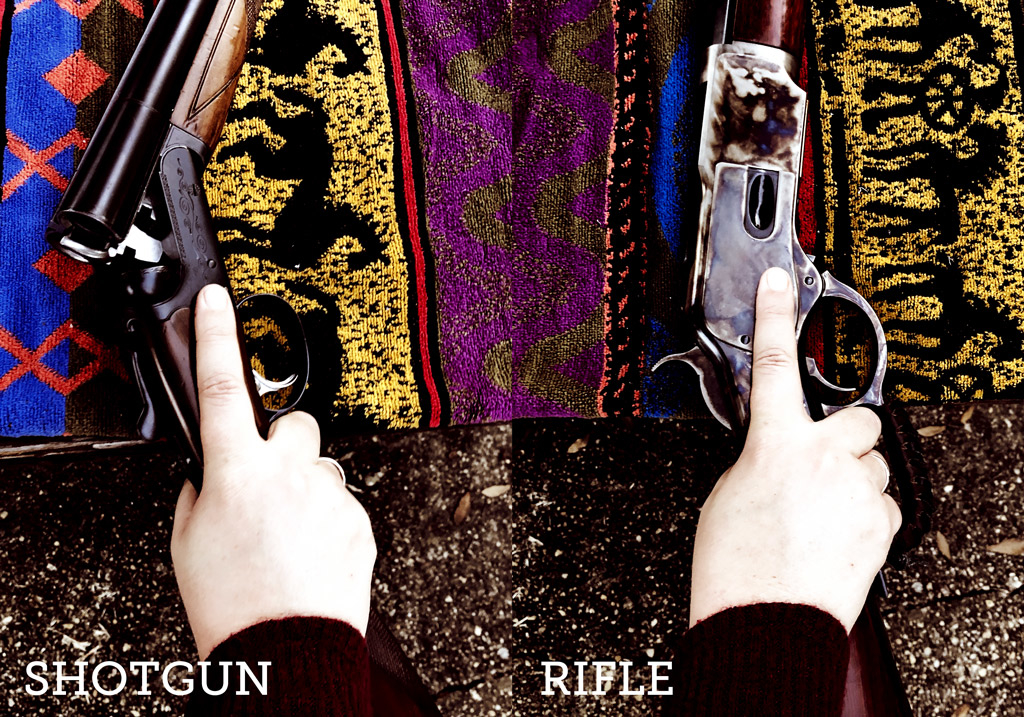
(Left) Staging your shotgun on the staging table at a CAS event. (Right) Staging your rifle on the staging table at a CAS event.
Tips On Shooting A CAS Stage
The pictured stage is a great example of choosing to shoot your shotgun last. There’s a choice of the order – R/S/P or R/P/S. When you start with your rifle, you are allowed to stage the rifle so that your lever can be off the table, except for your trigger. A trick I learned from top shooters is to look at your lever instead of the targets. This is because either way when the shot timer starts, you have to look down and find the lever. Stage the rifle in the direction of whichever set of targets you’re going to start shooting.
The next tip that may be obvious, is to shoot the left targets with the left pistol and the right targets with the right pistol. When you have to run to another gun, it doesn’t matter which pistol you finish with. On the run to your shotgun, go ahead and get your rounds out and have them ready to load. For this shot sequence, I would shoot left to right since that’s a natural progression. I also make sure that my shotgun is staged on the far left of the table so I don’t have as far to run. Your shotgun can be staged so that the stock is off the table all the way up to the trigger guard.
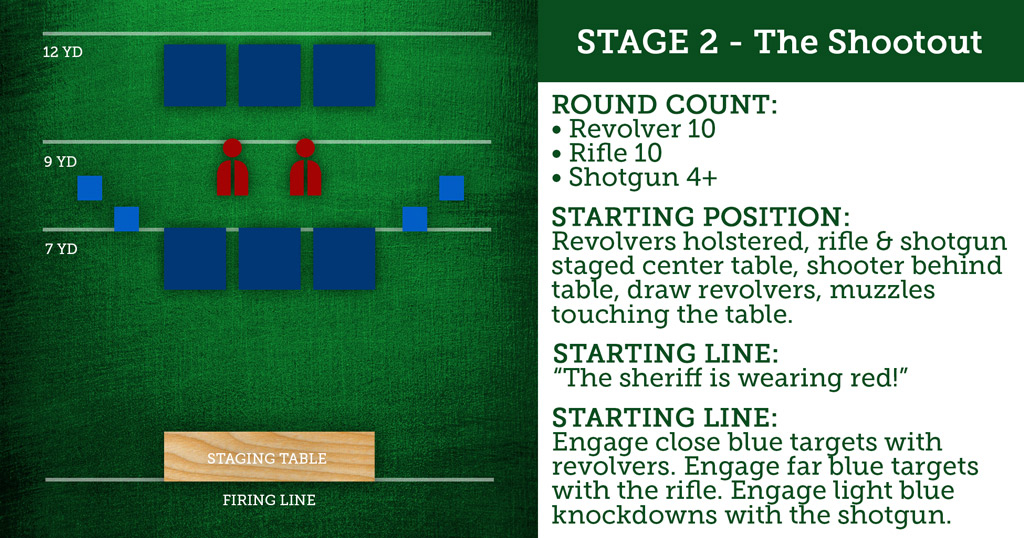
A sample stage at a Cowboy Action Shooting event.
Cowboy Action Shooting Lessons I’ve Learned
If you’re unsure of what you should do, ask a fellow shooter. There are no monetary awards or sponsorships in Cowboy Action Shooting, which makes it such a fun sport to shoot. Watch how others shoot the stage and look for some of these time-saving tricks I’ve written out. Whenever shotgun targets have lower and higher targets, always shoot from low to high since that’s where the recoil naturally brings you. Left to right isn’t always the best way to shoot a stage.
Learning how to shoot right to left from the very beginning will help you become a better shooter. If you accidentally eject rounds out of your rifle, you can reload ammo to make up the shots. Stage your guns safely, but close to the end of tables when running to them to save yourself time. Always make sure when holstering and setting firearms down that you take a minute to confirm they are safe. Dropped guns are grounds for disqualification (DQ). Remember to have fun and try new ways of shooting a stage!
Editor’s note: Be sure to also check out Kenzie’s guide to Cowboy Action Shooting.
